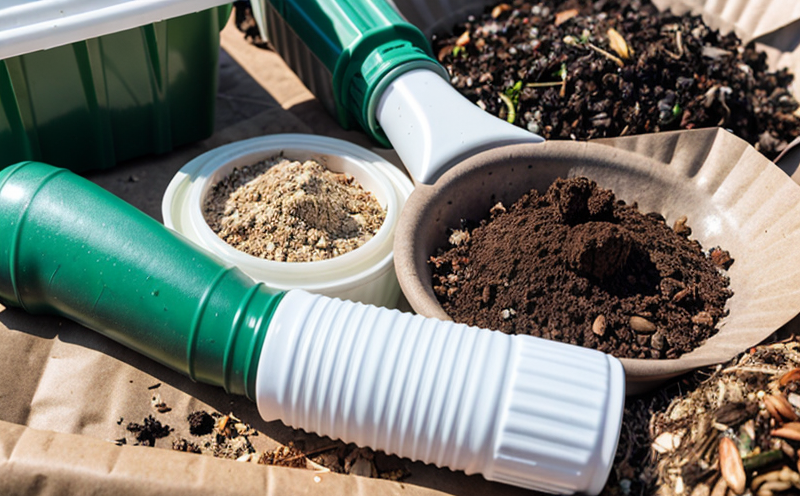EN 13678 Selenium in Compostable Waste
The European Standard EN 13678 specifies methods for determining selenium content in compost and composting materials. This standard is pivotal for ensuring the quality of compost used in agriculture, horticulture, and landscaping to enhance soil fertility while minimizing environmental impact.
Compostable waste testing using this method helps identify if selenium levels are within acceptable ranges, thereby preventing potential contamination that could harm crops or affect soil health. Selenium, a trace element essential for human nutrition but toxic at high concentrations, is present in various waste materials such as sewage sludge and paper products.
The testing process involves several critical steps. Specimens of compostable waste are first collected from different stages of the composting cycle to ensure a representative sample. These samples undergo rigorous preparation methods including drying, sieving, and homogenization to achieve consistency for accurate analysis.
After specimen preparation, the selenium content is measured using inductively coupled plasma mass spectrometry (ICP-MS). This high-sensitivity technique ensures precise quantification of selenium levels. The standard defines specific acceptance criteria for selenium concentration limits based on the intended use and quality grade of the compost material.
The results from this testing are crucial for compliance with environmental regulations and sustainability goals. For instance, agricultural compost used in organic farming must adhere to stringent standards set by EN 13678 to ensure product integrity and consumer safety.
Our laboratory adheres strictly to international standards such as ISO and ASTM to provide reliable selenium content analysis services that meet the highest industry expectations. Our team of experts ensures each test is conducted under controlled conditions, utilizing state-of-the-art equipment for accurate results.
Why It Matters
The importance of accurately measuring selenium content in compostable waste cannot be overstated. Selenium is a heavy metal with both beneficial and harmful properties depending on its concentration. In low concentrations, it supports plant growth; however, excessive levels can lead to toxicity issues affecting crop quality.
- Ensures compliance with environmental regulations
- Promotes sustainable agricultural practices
- Aids in the safe disposal of waste materials
- Enhances the quality and safety of compost products
By adhering to EN 13678, laboratories contribute significantly to reducing environmental pollution risks associated with improper handling or disposal of selenium-containing waste. This standard also supports sustainable resource management by ensuring that only compliant materials enter agricultural use.
Environmental and Sustainability Contributions
The implementation of EN 13678 plays a crucial role in promoting environmental sustainability through effective waste management practices. By identifying selenium contamination early, this standard helps prevent the introduction of harmful substances into soil ecosystems, which can have long-term impacts on biodiversity.
Composting is an environmentally friendly alternative to landfilling, and ensuring that compost products meet specific quality standards like those outlined in EN 13678 enhances their value. This not only improves soil health but also reduces greenhouse gas emissions associated with waste decomposition.
In addition to supporting sustainable agricultural practices, adhering to this standard fosters innovation within the waste management sector by encouraging the development of new compostable materials and technologies aimed at reducing selenium contamination.
Use Cases and Application Examples
| Use Case | Description |
|---|---|
| Agricultural Compost Production | Ensures that compost used in organic farming meets stringent quality standards set by EN 13678. |
| Sewage Sludge Recycling | Determines whether recycled sewage sludge complies with acceptable selenium content limits for use in horticulture. |
| Paper and Pulp Industry By-Products | Monitors the selenium content of by-products from paper production processes to ensure safe disposal methods. |
| Hazardous Waste Management | Identifies potential sources of selenium contamination in mixed waste streams, guiding appropriate treatment strategies. |
The above examples illustrate how EN 13678 Selenium testing contributes to various sectors involved in waste management and recycling. By providing accurate data on selenium levels, this standard supports informed decision-making processes aimed at enhancing environmental protection measures.
- Enhances the reliability of compost products for agricultural use
- Promotes responsible disposal practices for hazardous waste materials
- Fosters innovation in developing safer recycling solutions





